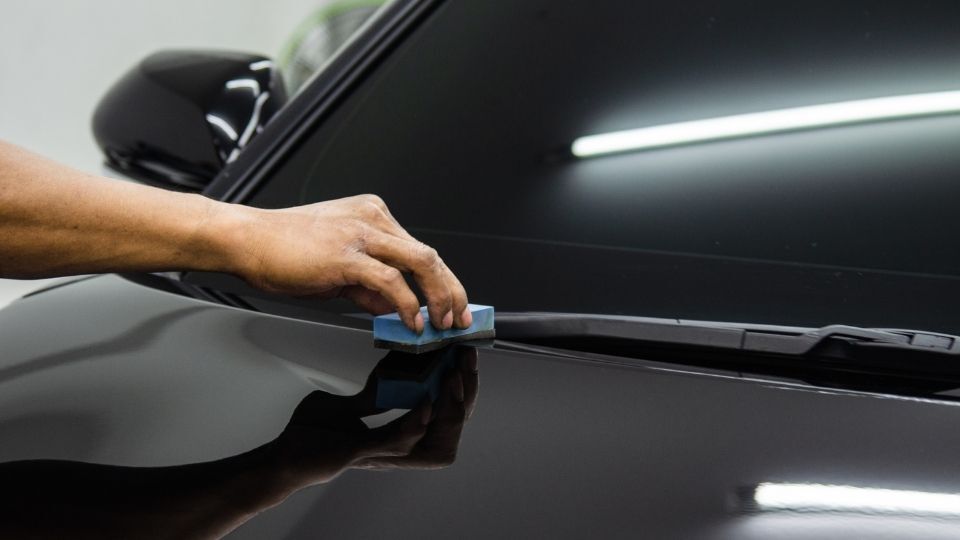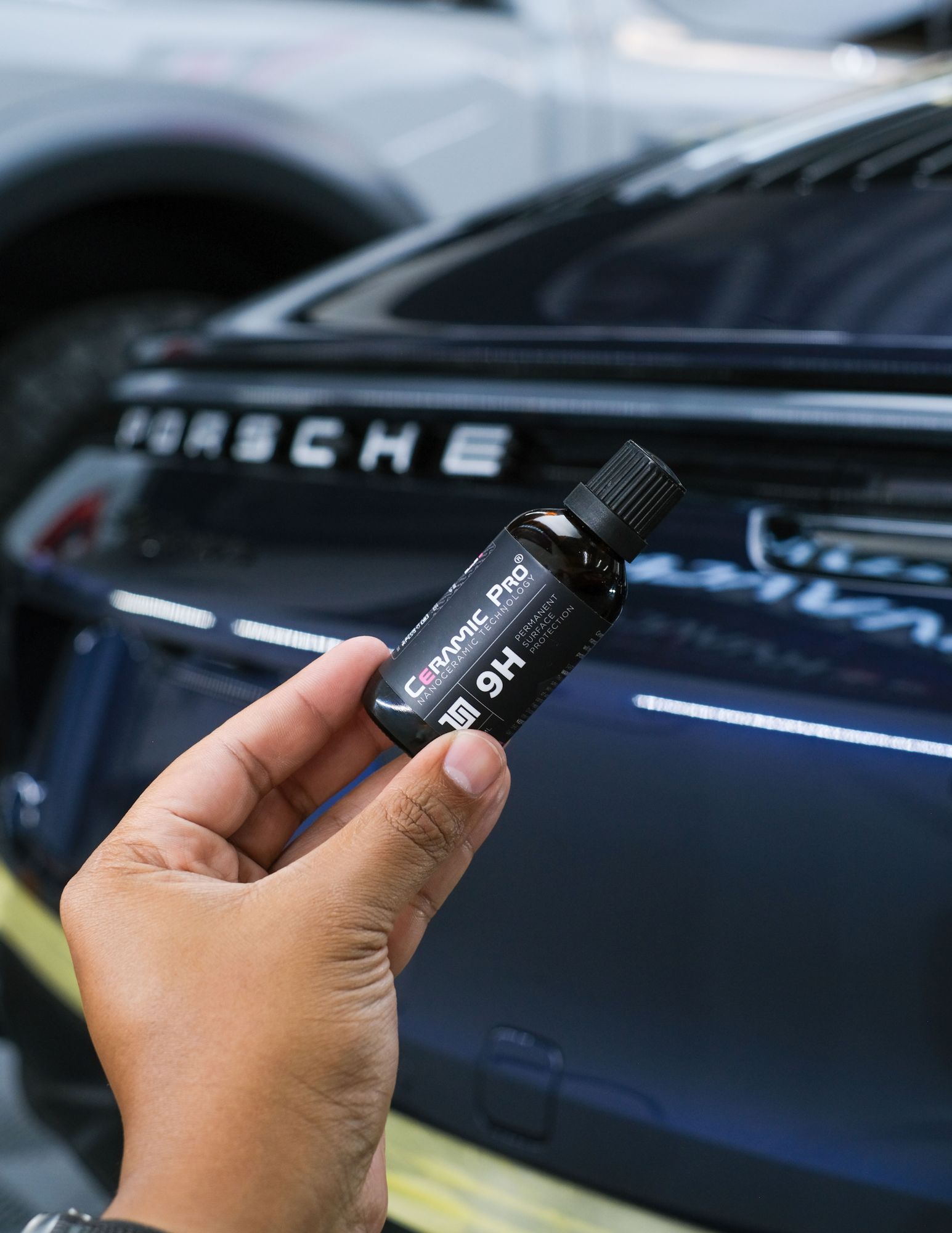Is Ceramic Coating Worth the Investment for Your Car’s Exterior?
Is Ceramic Coating Worth the Investment for Your Car’s Exterior?
Blog Article
Ceramic Finish vs. Traditional Wax: Which Offers Better Long-Term Defense?
The argument in between ceramic layers and conventional wax for automobile protection has actually amassed significant focus among auto lovers and experts alike. Ceramic coatings flaunt superior durability and resistance to ecological variables, yet the complexity of their application increases questions concerning access and practicality.
Summary of Ceramic Coating
Ceramic layer has actually obtained significant appeal amongst automotive fanatics and detailers alike due to its innovative safety top qualities. This ingenious technology is created to create a resilient, hydrophobic shield over an automobile's paint surface, dramatically improving its resistance to ecological contaminants such as dirt, UV rays, and chemical spots. Unlike traditional wax, which supplies a short-term layer of protection, ceramic layers bond at a molecular level with the paint, using long-lasting resilience-- typically extending beyond two years with proper maintenance.
The application procedure involves precise preparation of the lorry's surface area, consisting of cleansing and brightening to guarantee optimal bond. When used, the finishing cures to develop a durable layer that not just includes depth and gloss to the paint yet additionally streamlines upkeep. With its hydrophobic residential or commercial properties, ceramic layer allows water and dirt to slide off even more conveniently, reducing the frequency of washes and lessening the threat of swirl marks.
Furthermore, ceramic layers are offered in various formulations, enabling individuals to select items customized to their certain requirements and preferences. In general, ceramic coating represents a substantial improvement in paint protection innovation, supplying exceptional performance compared to traditional alternatives.
Review of Typical Wax
Typically considered a staple in auto treatment, wax acts as a prominent option for those looking for an uncomplicated approach to boost and secure their automobile's paint - ceramic coating. Automotive wax typically consists of all-natural ingredients, such as carnauba, or artificial compounds, created to produce a safety layer externally of the paint. This layer not just boosts the car's gloss and shine but also gives an obstacle against ecological pollutants
The application of wax is normally easy to use, making it obtainable for both experts and do it yourself lovers. It can be applied by hand or maker, permitting convenience in the outlining procedure. When applied, wax calls for a treating duration, after which it hardens to form a protective shell. Wax is likewise understood for its capability to ward off water, promoting a beading effect that assists in the prevention of water places and corrosion.
Nevertheless, while wax works for enhancing the aesthetic appeal of a vehicle, it is very important to keep in mind that the protection it uses might demand more constant reapplication compared to alternative items, such as ceramic coverings. In general, conventional wax stays a preferred option for those prioritizing simplicity of use and prompt aesthetic enhancement.
Sturdiness and Durability Comparison
While both ceramic coatings and standard wax deal safety advantages for automotive paint, their sturdiness and durability vary significantly. Conventional wax, commonly made from natural carnauba or artificial polymers, usually gives a safety layer that lasts around 3 to 6 months. This relatively short life expectancy necessitates normal reapplication to keep ideal security.
On the other hand, ceramic coverings are engineered from sophisticated nanotechnology, creating a covalent bond with the paint surface area. This causes a robust, hydrophobic layer that can sustain for 2 to 5 years, depending upon the product and ecological problems. The remarkable toughness of ceramic finishings is associated to their chemical framework, which uses boosted resistance to scrapes, UV rays, and oxidation.

Defense Against Ecological Elements
Safeguarding a vehicle's paint from environmental aspects is vital for keeping its appearance and worth in time. Automobiles are continuously subjected to a variety of components, including UV rays, bird droppings, tree sap, acid rain, and road navigate to this website gunk, every one of which can endanger the stability of the paintwork.
Ceramic coverings supply a robust defense versus these ecological aggressors. Unlike standard wax, which can break down promptly under UV exposure, ceramic layers create a long lasting, hydrophobic layer that stands up to the damaging impacts of sunlight and toxic wastes. This advanced technology produces a chemical bond with the vehicle's surface, using premium defense that lasts for years, even in harsh conditions.
Traditional wax, while less complicated to use, normally calls for regular reapplication and provides minimal resistance to contaminants and UV rays. In time, it can damage down, leaving the paint prone to scrapes and oxidation. In contrast, ceramic coverings maintain their safety top qualities longer, substantially minimizing the threat of paint damage and ensuring that the automobile keeps its aesthetic charm. As a result, ceramic coverings are increasingly identified as the exceptional choice for long-term protection against environmental factors.
Application and Maintenance Differences
The techniques of application and succeeding maintenance for ceramic coverings and standard wax vary considerably, impacting the general individual experience and efficiency of each product. Ceramic coverings need a more intricate application process, normally involving surface area prep work that consists of washing, sanitizing, and polishing the car. When the surface prepares, the ceramic finish is used in a controlled setting, typically requiring specialist competence to ensure proper curing and bonding to the paint.

While both items boost automobile appearance, the longer-lasting protection used by ceramic coatings might warrant their preliminary financial investment, in spite of the more demanding application procedure. On the other hand, conventional wax continues to be a prominent option for those seeking a simpler, albeit temporary, remedy.

Final Thought
In final thought, ceramic coverings show substantial advantages over typical wax in terms of resilience other and environmental protection. With a life expectancy prolonging two to five years and remarkable resistance to UV rays, dirt, and chemical spots, ceramic coverings use a much more reliable option for long-term car maintenance. The application procedure might require expert expertise, the resulting cost savings and reduced regularity of reapplication underscore the worth of ceramic coatings for those looking for ideal automobile defense.
The argument between ceramic finishings and traditional wax for lorry defense has amassed considerable attention among vehicle fanatics and professionals alike. Unlike standard wax, which provides a temporary layer of protection, ceramic finishings bond at a molecular degree with the paint, using long-lasting durability-- reference typically prolonging past 2 years with appropriate maintenance.
While both ceramic layers and standard wax offer protective advantages for auto paint, their durability and long life vary significantly. For car enthusiasts seeking long-lasting protection, ceramic finishes provide an engaging advantage over conventional wax products.
In conclusion, ceramic layers show significant advantages over typical wax in terms of sturdiness and environmental defense.
Report this page